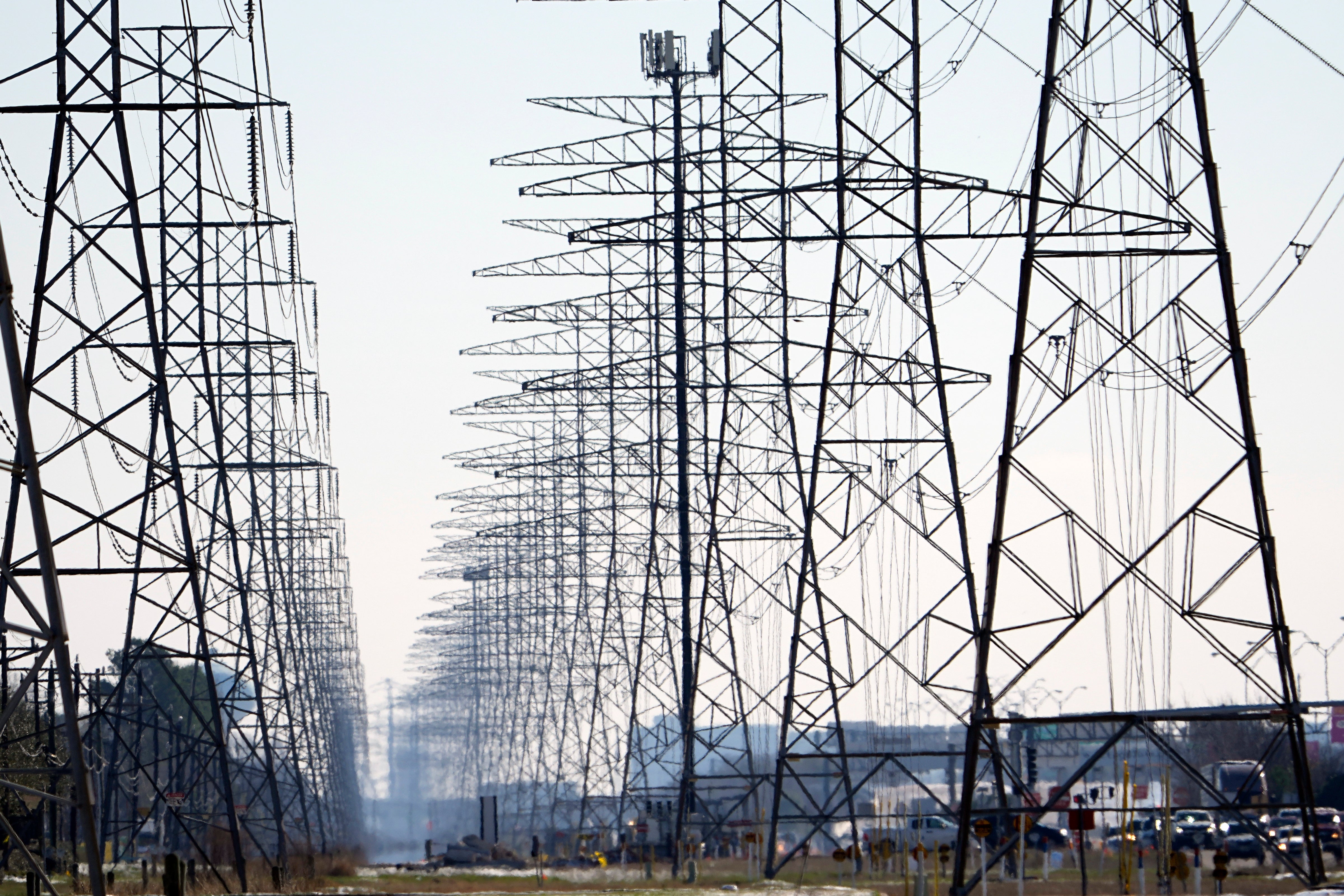Texas blackouts fuel false claims about renewable energy
Conservative commentators on Tuesday shared a false narrative that wind turbines and solar energy were primarily to blame for power outages across Texas as the power grid buckled

Your support helps us to tell the story
From reproductive rights to climate change to Big Tech, The Independent is on the ground when the story is developing. Whether it's investigating the financials of Elon Musk's pro-Trump PAC or producing our latest documentary, 'The A Word', which shines a light on the American women fighting for reproductive rights, we know how important it is to parse out the facts from the messaging.
At such a critical moment in US history, we need reporters on the ground. Your donation allows us to keep sending journalists to speak to both sides of the story.
The Independent is trusted by Americans across the entire political spectrum. And unlike many other quality news outlets, we choose not to lock Americans out of our reporting and analysis with paywalls. We believe quality journalism should be available to everyone, paid for by those who can afford it.
Your support makes all the difference.With millions of Texasresidents still without power amid frigid temperatures, conservative commentators presented a false narrative that wind turbines and solar energy were primarily to blame.
“We should never build another wind turbine in Texas,” read a Tuesday Facebook post from Texas Agriculture Commissioner Sid Miller. “The experiment failed big time.”
“This is a perfect example of the need for reliable energy sources like natural gas & coal,” tweeted U.S. Sen. Steve Daines, a Republican from Montana, on Tuesday.
In reality, failures in natural gas, coal and nuclear energy systems were responsible for nearly twice as many outages as frozen wind turbines and solar panels, the Electric Reliability Council of Texas, which operates the state’s power grid, said in a press conference Tuesday.
Still a variety of misleading claims spread on social media around renewable energy, with wind turbines and the Green New Deal getting much of the attention.
A viral photo of a helicopter de-icing a wind turbine was shared with claims it showed a “chemical” solution being applied to one of the massive wind generators in Texas. The only problem? The photo was taken in Sweden years ago, not in the U.S. in 2021. The helicopter sprayed hot water onto the wind turbine, not chemicals.
Other social media users, including Republican U.S. Rep. Lauren Boebert of Colorado, puzzlingly labeled the Green New Deal as the culprit. Boebert tweeted on Monday that the proposal was “proven unsustainable as renewables are clearly unreliable.”
But the Green New Deal is irrelevant, as no version of it exists in Texas or nationwide, said Mark Jacobson, director of the Atmosphere/Energy Program and professor of civil and environmental engineering at Stanford University.
“It’s really natural gas and coal and nuclear that are providing the bulk of the electricity and that’s the bulk of the cause of the blackouts,” Jacobson told The Associated Press.
ERCOT said Tuesday that of the 45,000 total megawatts of power that were offline statewide, about 30,000 consisted of thermal sources — gas, coal and nuclear plants — and 16,000 came from renewable sources.
On top of that, while Texas has ramped up wind energy in recent years, the state still relies on wind power for only about 25% of its total electricity, according to ERCOT data.
“It’s not like we were relying on it to ride us through this event,” Joshua Rhodes, a research associate at the Webber Energy Group at the University of Texas at Austin, told the AP. “Nor would it have been able to save us even if it were operating at 100% capacity right now. We just don’t have enough of it.”
The agency confirmed that wellhead freeze-offs and other issues curtailing supply in natural gas systems were primarily to blame for new outages on Tuesday, after severe winter weather caused failures across multiple fuel types in recent days.
Renewable energy is a popular scapegoat for new problems as more frequent extreme weather events strain infrastructure, according to Emily Grubert, an assistant professor of Civil and Environmental Engineering at Georgia Institute of Technology.
“It’s easy to focus on the thing that you can see changing as the source of why an outcome is changing,” Grubert told the AP. “The reality is that managing our systems is becoming more difficult. And that’s something that is easy to blame on the reaction to it, but it’s not actually the root cause.”